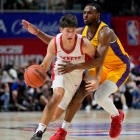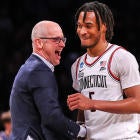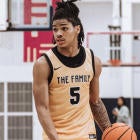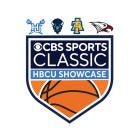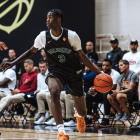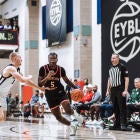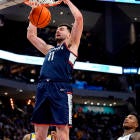The one-and-done era has undeniably had a massive effect on the NBA.
Since the NBA adjusted the rules for early entry to the draft starting with the 2006 iteration, the league has changed for better or for worse in terms of how it evaluates prospects. On one hand, teams are much more meticulous in terms of the information they gather about injuries and about breaking down the important parts of a player's game. On the other, the players entering the league now are often much less polished than they had been in the past, with most opting to maximize their draft stock instead of maximizing their skill before entering the league. With the way the process is set up, it's the right call. But it's had some unintended consequences for the way teams are forced to develop players now going forward.
We're about to have our 11th draft since the rule took hold, which gives us a rather large sampling of players that have come and gone through. But who were the best prospects to enter the draft since that time? Below, I have tried to compile such a list, including where I believe 2016's top prospects Brandon Ingram and Ben Simmons slot into the mix. It's important when reading this list to remember a couple of things.
First, this takes no sort of hindsight into account. That's obviously rather tricky, given what we know about how many of these players' careers unfolded. However, these players are being evaluated purely on their prospects upon when they entered the league. Second, I've asked around to gather opinions beyond simply my own. This includes other media members, scouts, and a few NBA personnel people. The framework for the list is mine, but I am but the largest voice of a group of people who attempted to take the trip down memory lane with me. Obviously, not everyone is going to agree on this full list, and that's fine.
A few quick notes:
- Regarding where the top player in the 2016 NBA Draft -- Simmons -- is ranked, based on this list he would be the likely No. 1 overall pick in four of the previous 11 drafts.
- Schools with the most representatives: Duke with four, Ohio State with three, Kentucky with three.
- 14 of the 20 are at least 6-foot-8 or taller, showing the emphasis on size in the draft.
- Some players who just missed the cut: Kevin Love, Kristaps Porzingis, Adam Morrison, Ricky Rubio, and Derrick Williams. Pretty mixed group there in terms of success, right?
- The only draft since 2006 not represented on the list is 2013, which should come as no surprise. At the top, that draft was a complete mess that saw the Cavaliers shock the world and select Anthony Bennett due to the lack of option at the top. The development of Giannis Antetokounmpo and Rudy Gobert has helped that draft hold its own, but it's still the worst draft of the era.
So without further ado, here is the list.
20. SG/SF Evan Turner (2010, Ohio State): Turner comes in 20th here after his national player of the year award winning junior season at Ohio State. Turner averaged 20 points, nine rebounds and six assists for the Buckeyes, and was simply dominant at every facet of the collegiate game. His time also came at the height of Brandon Roy's peak in the NBA, showing that you didn't necessarily need to be an elite athlete to reach an all-star level in the league. However, there were still questions about that explosiveness and about his shooting ability that slightly held back his stock and never allowed him to ascend to the No. 1 spot over John Wall.
19. PF/C LaMarcus Aldridge (2006, Texas): The 2006 draft was a weird one, given that it was the first to not feature high school players. Because the draft pool still had not caught up to the rule change yet, that meant this was the down year in terms of losing a class, giving the 2007 draft a massive boon. Aldridge was the best prospect in that class despite going No. 2, though, scoring 15 points and grabbing nine rebounds while winning the Big 12 defensive player of the year award at Texas after being a five-star prospect at 6-11 with a near 7-5 wingspan. Still though, what held him back were largely inconsistent performances during his sophomore season at Texas, never fully showing all of the gifts that have made him a five-time NBA all-star.
18. PF/C Al Horford (2007, Florida): Horford has largely lived up to being the third overall pick behind the top two players on this list by making four all-star teams with the Hawks. His college career was equally as decorated as the top prospect on a team that won back-to-back national championships under Billy Donovan. He was considered as well-rounded a prospect as you'll find, with the ability to shoot, rebound, defend both inside and out, and pass the ball. Those skills have largely translated to the NBA, as well.
17. PG/SG D'Angelo Russell (2015, Ohio State): Russell was undoubtedly the lowest-rated one-and-done recruit to be on this list. However, it was clear by the end of his freshman season at Ohio State what kind of prodigious skill he had for the game. Russell averaged 19.3 points, 5.7 rebounds and five assists per game during that season, hitting 41 percent of his 3s and showing off absurd court vision. He nearly caught up to Okafor on a consensus level by the time his draft rolled around, and should have a successful career with the Lakers -- who took him second overall in 2015.
16. PG Kyrie Irving (2011, Duke): It's, of course, worth remembering that Irving only played 11 games during his freshman season at Duke, thus limiting his value a bit. It was a somewhat legitimate argument at the time as to whether or not the Cavaliers should select him or Arizona's Derrick Williams. In the end though, Cleveland made the right call and went with Irving, who has become an all-star point guard. Irving showed from day one at Duke that he had the ability to shoot, finish in the lane, and beat anyone off of the dribble due to his handle in just that small sample of games. Still, there were questions about his athleticism, given that he's not the elite athlete of the other point guards above him on this list.
15. SG O.J. Mayo (2008, USC): Another situation where it's hard to remember this now, but Mayo was considered the next great guard during his elite high school career. He was named All-State in Kentucky as an eighth grader, and moved around a bit before calling USC home for a year. During that season, he continued to do what he did in college, scoring over 20 points per game. However, some of the cracks began to show, as he struggled a bit to score inside the arc and didn't seem nearly as athletically dominant. He still went No. 3 overall behind Rose and Beasley though in a superb draft that also saw Kevin Love, Russell Westbrook, and four other all-stars selected.
14. C Jahlil Okafor (2015, Duke): Okafor ended up going No. 3 in the draft, but seemed to still be the consensus No. 2 player on the board prior to his selection. Okafor was considered the likely No. 1 overall pick for about half of the college basketball season until he was overtaken by Karl-Anthony Towns. The 6-11 center who led Duke to a national championship was considered to have the most polished post game to enter the college ranks since Tim Duncan, and he's taken that to the NBA as he averaged over 17 points per game in a maligned rookie season. Whether or not he lives up to this billing will be dependent on him becoming a more polished defender and adding a bit of a mid-post game.
13. F Brandon Ingram (2016, Duke): Ingram is basically the perfect modern player in theory. He's a 6-9 forward who can shoot the ball, score in isolation, and switch up and down the lineup defensively. That has tremendous value in today's NBA. Still, he's not quite a good enough ball-handler at this stage, and doesn't quite have the athletic explosiveness of some of the long perimeter players above him on the list. Still, you're talking about a potential NBA all-star here, and someone worth investing a top pick in. It'll go down to the wire as to whether or not he or Simmons is the No. 1 overall pick.
12. C Joel Embiid (2014, Kansas): Embiid is the hardest person to place on this list. If it wasn't for the injury concerns pre-draft, the 7-foot Cameroonian would likely be more in the Anthony Davis/Karl-Anthony Towns range than this one. After all, it's not every day that legitimate comparisons are thrown around to Hakeem Olajuwon. Precious few guys at that size have had the grace and skill of Embiid, and the sky seems to be the limit with his game once he gets onto the floor. But the getting on the floor thing was always going to be an issue given the foot and back injuries that were found pre-draft, and they have to count for something. He still hasn't played a game yet in two years for the 76ers. Still though, if he can get healthy, he's a potential franchise player in Philly.
11. F Ben Simmons (2016, LSU): Simmons is the top prospect from this 2016 Draft, and he slots in here just slightly outside of the top-10. The skills with Simmons that could make him an all-star -- his basketball sense and fluid athleticism at 6-foot-9 -- are apparent. He's also a superb rebounder, and unstoppable in transition. But there are still questions about how he's going to score in half-court settings due to his lack of shooting ability, and questions as to whether or not he has the desire to defend. There's a major chance that he can out-perform this ranking by working at his game, but there are still significant questions about his game that need answered.

10. SF/PF Jabari Parker (2014, Duke): Parker was proclaimed "the best high school basketball player since LeBron James" by Sports Illustrated in 2012, when he led Simeon High School to a state title. However, his star was slightly overshadowed by Wiggins, who decided to reclassify into the 2013 high school basketball class. Parker mostly lived up to the hype at Duke, throwing up 19 points and nine rebounds per game -- including dropping 27 against Wiggins and Kansas in his second collegiate game. The 6-foot-8 star was a train in transition, and a terrific player at creating shots at all three levels, including the mid-post, the post, and the 3-point line. Parker did tear his ACL in his rookie season with Milwaukee, but was pretty superb from February onward in his sophomore year, averaging 18.5 points and six rebounds per game.
9. SF/PF Michael Beasley (2008, Kansas State): For my money, there has not been a more dominant offensive college basketball player over the last decade than Beasley. The Kansas State forward averaged 26.2 points and 12.4 rebounds per game while putting up a ridiculous 61.0 true-shooting percentage. He was an all-around force who was just as comfortable stepping away from the basket as he was going inside and finishing among the trees. He could create looks with his mid-post game, or he move off-ball and find open spots in the defense. So why is he not higher on this list? Well, the issues that ended up popping up throughout his career in terms of his personality have existed since high school. Also, at 6-8 with a 7-foot wingspan, he was kind of in between positions in the NBA game. Still, the common thought at the time was that he'd figure things out in a way that he just ended up never quite doing.
8. PF Blake Griffin (2009, Oklahoma): Griffin was a McDonald's All-American in 2007 due to his athleticism and had a solid freshman season, but his leap came in his sophomore season. The 6-10 forward averaged 22 points and 14 rebounds per game while dominating opponents with his athleticism and explosiveness. He led the country in rebounding, and finished second in field-goal percentage despite a heavy usage rate next to Willie Warren and Tony Crocker. Despite that production outpacing any of the players above him outside of Kevin Durant, there remained questions about his defensive ability and whether or not his game -- which at that point was nearly wholly reliant on athleticism -- would develop. Luckily for the Clippers, Griffin has become a force offensively not only due to his leaping, but also due to his passing and now ability to shoot out to 20 feet.
7. PG John Wall (2010, Kentucky): Wall went essentially wire-to-wire in terms of being the No. 1 overall pick. One of the top recruits in the country, the 6-3 point guard was a first team All-American after averaging 16.6 points and 6.5 assists per game with John Calipari in his first season at Kentucky. Wall was highly regarded due to his explosive athletic ability and length. There was no player in amateur basketball who could keep Wall out of the paint, and that quickness translated to the defensive end, where Wall was a ball-hawk and one-man transition opportunity waiting to happen. Since getting to the NBA, he's made three All-Star teams, making the Wizards' investment in him worthwhile.
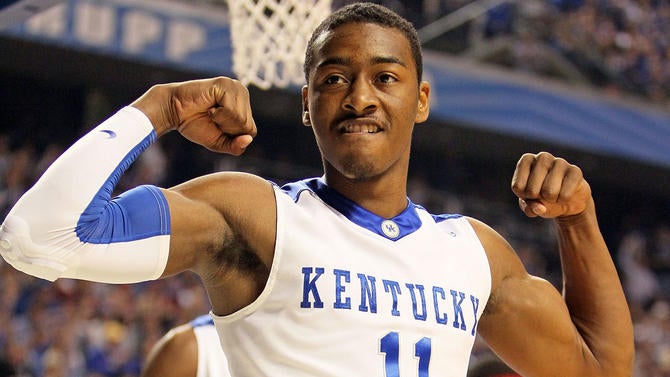
6. SG/SF Andrew Wiggins (2014, Kansas): In high school, Wiggins was considered to be in the Anthony Davis/Greg Oden class in terms of prospects to come along since LeBron James. The elite of the elite. Then, his season of college didn't entirely go as planned. It was clear from the jump that Wiggins was in a class by himself athletically during the 2013-14 college basketball season, but his skill set hadn't yet quite caught up to those lofty heights. His ball-handling ability wasn't great, and his shooting still hadn't quite developed to that point. Still, Wiggins averaged 17 points and earned his way to the No. 1 overall pick by showing growth throughout the season, and was seen as the savior of the Wolves until Towns got into town. He seems to be making that leap toward All-Stardom already, as he averaged nearly 21 points per game this season in Minnesota.
5. PG Derrick Rose (2008, Memphis): Rose entered his lone collegiate season as the No. 1 recruit in the country, and like Towns struggled a bit to adjust to the NCAA game early. But he ended up averaging nearly 15 points, five assists and five rebounds, making third-team All-America and leading the Tigers to the national championship game that is now legendary for Mario Chalmers' game-tying 3. NBA teams were particularly fond of Rose's explosiveness, which placed him among the truly elite in college basketball over the last couple of decades. That athletic ability clearly translated to the NBA, as Rose ended up winning an MVP award before injuries derailed his career.
4. C Karl-Anthony Towns (2015, Kentucky): Towns did not enter his freshman season at Kentucky as the presumptive No. 1 overall pick, and even through January was still not quite at an elite level for the Wildcats. But by the end of the year, he had morphed into the type of two-way star that deserves this sort of lofty ranking, becoming a monster near the rim on defense as well as an efficient scoring machine on offense, both near the block and out into the midrange. Plus, he had portrayed in high school to have a perimeter game that Kentucky coach John Calipari didn't allow him to show. Basically, he was everything that the NBA was looking for in terms of a modern big man as the league was going toward a pace-and-space model. He was the right prospect who came out for the draft at the right time. His rookie season in 2016 evoked the names Olajuwon, O'Neal, and Robinson, and it seems the sky is the limit for the 7-footer.
3. PF/C Anthony Davis (2012, Kentucky): Davis led Kentucky to a national title in his lone season in Lexington, dominating the nation in with ease on both ends of the floor on his way to a national player of the year award. Simply put, his presence changed the game on both ends of the floor unlike any other recent player in college hoops. He was arguably the best off-ball offensive player in college basketball in 2012, leading the Wildcats in scoring at 14.2 points per game while only possessing a usage rate that ranked sixth on the team. He was efficient, showing potential to hit jumpers from distance and make shots inside due to his super athleticism. Defensively, he was a monster that led the nation in blocks inside while destroying any perimeter action that a team wanted to run on the outside due to his mobility, leaping, and length. Basically, he did everything that teams wanted a modern big man to do, while also showing the potential to grow and the demeanor to work hard to improve. There was very little about Davis that wasn't perfect at the time, and he's largely lived up to that billing in the NBA despite a spate of injuries that has occasionally affected his play.
2. SF/PF Kevin Durant (2007, Texas): Yup, the top two players on this list were in the same draft. Durant was college basketball player's national player of the year as a freshman, an unstoppable scoring and rebounding machine for the Texas Longhorns under Rick Barnes. Durant averaged 25.8 points and 11.1 rebounds per game, each of which finished fourth nationally. He was a 6-10 forward with a 7-5 wingspan that essentially seemed like he was sent from a different planet with how he could attack the basket, shoot 40 percent from distance, and run the floor. Everything that he does now in the NBA was already on full display in college. He entered the league at the height of Dirk Nowitzki's powers -- as the German Maverick was coming off of his MVP season when Durant was drafted -- and seemed to possess a more fully evolved set of skills at that height and age due to his athleticism. Floor-spacing big men had just started to become en vogue, and Durant's elite size and perimeter skill to go with tremendous production made him one of the best prospects we've seen in a long time.
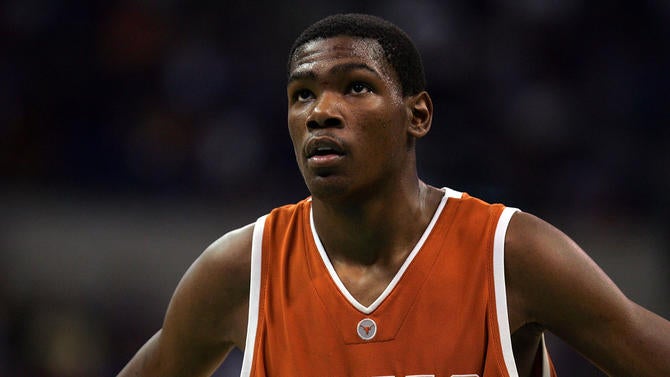
1. C Greg Oden (2007, Ohio State): It's difficult to remember now due to how things played out in terms of injury, but when Oden came out of Ohio State he was as elite as a prospect can get. Long touted throughout high school as the "next great big man" in the NBA, Oden entered college basketball and immediately dominated, averaging 15.4 points, 9.6 rebounds and 3.3 blocks in 28 minutes per game and leading the Buckeyes to a national game appearance despite playing a large portion of the year with torn wrist ligaments in his right hand that forced him to shoot free throws left-handed until March (an unfortunate injury that in hindsight was the first in a long line of them derailing his career). In the national championship game against another player on this list, Al Horford, Oden went off for 25 points, 12 rebounds and four blocks in a losing effort to the deeper Florida Gators. Then, at 7-feet tall and 257 pounds in the pre-draft settings, he outperformed Kevin Durant's scores athletically in the three-quarter court sprint, lane agility, and vertical leap measures. Yeah, Oden was a total freak who dominated both ends of the floor, and it's a shame that we never totally got to see him at his peak.










